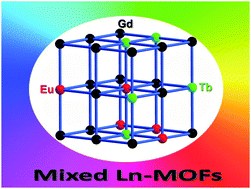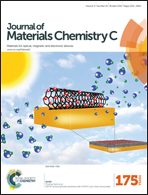Tunable luminescence and white light emission of mixed lanthanide–organic frameworks based on polycarboxylate ligands
Abstract
In the last few years, Ln-MOFs, which are stable multi-dimensional frameworks composed of highly luminescent Ln3+ ions and multitopic organic ligands, have become a very fascinating class of materials in view of their luminescence properties. Their luminescence can be easily modulated owing to their structural diversity and predictability, as well as multiple options for excitation and emission, including those performed via the organic linker serving as an efficient antenna, the discrete energy levels of Ln3+ ions, and the luminescent guests that were trapped in the cavities. In particular, the similarity in the chemical reactivity and the coordination environment of different Ln3+ ions allows the formation of a series of isostructural mixed Ln-MOFs whose colour output can be fine-tuned by changing the types and relative concentration of the constituent Ln3+ ions or the excitation wavelength. Most significantly, white-light emitting materials may be obtained if the mixing of Ln3+ ions can be carefully controlled. Based on these unique properties, mixed Ln-MOFs may play an outstanding role in the fields of lighting and display systems. The aim of this review is to provide an overview of the current status of the research on mixed Ln-MOFs, especially those constructed using aromatic polycarboxylate ligands, and to highlight their colour tunable and white light emission properties.


 Please wait while we load your content...
Please wait while we load your content...